Equine gastric ulcer syndrome (EGUS) is common in horses. Studies show that over 90% of horses in strenuous athletic work, such as racing Thoroughbreds and endurance horses have ulcers on gastroscopy (scoping the stomach). However, it is less well recognised that the disease is also common in non-performance animals with over 50% of horses in light work or at pasture having EGUS lesions on scoping without any apparent clinical or behavioural signs of disease. This shows that, whilst there are many signs that are thought to be suggestive of EGUS (e.g. resenting girthing, kicking whilst eating, repeated low grade colic, abnormal behaviour, etc.) the only definitive way to know if a horse has ulcers is by gastroscopy. This also allows distinction between squamous and glandular ulcers which is important for appropriate treatment selection. However, gastroscopy requires the horse to be starved for 12-14h and is an invasive procedure requiring sedation, albeit one that horses tolerate exceedingly well.
A recently published study by researchers in Egypt and Saudi Arabia (Shawaf et al. 2020) investigated if measurement of various proteins or oxidative stress biomarkers in a blood sample could be used as a less invasive means of diagnosing EGUS. The study compared these blood markers in 30 horses diagnosed by gastroscopy with EGUS of Grade 2 or greater and 15 clinically healthy horses with no EGUS lesions on gastroscopy. The concentration of malondialdehyde (MDA), a biomarker of oxidative stress was significantly higher in the blood of horses with EGUS compared with the healthy control horses whereas concentrations of the antioxidant molecule nitric oxide was lower in horses with EGUS. Additionally, the inflammatory proteins interleukin-6 (IL-6) and tumour necrosis factor alpha (TNF-α) were elevated in EGUS horses.
The authors concluded that MDA, TNF-α, and IL-6 maybe useful as preliminary screening markers for EGUS. However, as these markers are not specific for EGUS, gastroscopy remains the “gold standard” for diagnosis EGUS. Of more clinical relevance perhaps is that systemic oxidative stress (in the blood) is evident in horses with EGUS suggesting that antioxidant therapy may be useful for supportive treatment of horses with ulcers. If you are interested in feeding your horse a source of antioxidants, it is important to choose a supplement with suitable ingredients:
• Antioxidants such as Vitamins C and E are part of the body’s natural defence mechanism against cell injury and reduce damage caused by inflammation.
• Feeding a supplement containing Vitamins C and E has been shown to increase levels of antioxidant activity in horses.
• The form of Vitamin C is important as some forms are more stable and absorbable by horses than others - look for Vitamin C provided as ascorbyl monophosphate as this is the most stable and best absorbed in horses.
Shawaf, T. El-Deeb, W.M. and Elgioushy, M. The Contribution of Specific and Nonspecific Biomarkers in Diagnosis of Equine Gastric Ulcer Syndrome (EGUS) Under Field Condition. Journal of Equine Veterinary Science, Volume 84, 2020, 102853,
To view study click HERE
TOP TEN TIPS FOR REDUCING RISK OF EGUS
• Feed a high forage content diet. Dry matter intake of forage should be at least 1.5% of bodyweight.
• Avoid long periods without forage - horses are trickle feeders designed to graze for 16h per day and should be provided forage ad libitum.
• Restrict the amount of concentrate (sweet feed) to less than 0.5% of bodyweight.
• Concentrates should contain less than 20% non-structural carbohydrate (sugars and starch) to minimise volatile fatty acid production in the stomach.
• If feeding concentrates, feed smaller more frequent meals. Do not exceed 0.5kg/100kg bodyweight every 6 h.
• Feed a small amount (couple of handfuls) of forage before any exercise buffer acid and to act as a fibrous mat to limit acid splashing in the stomach.
• Identify any potential stressors and eliminate them if possible.
• Give your horse at least 2 rest days per week.
• Minimise the number of people looking after your horse to three or less.
• Feed a high quality, evidence-based supplement containing buffering antacids, antioxidants, and pectin products.

